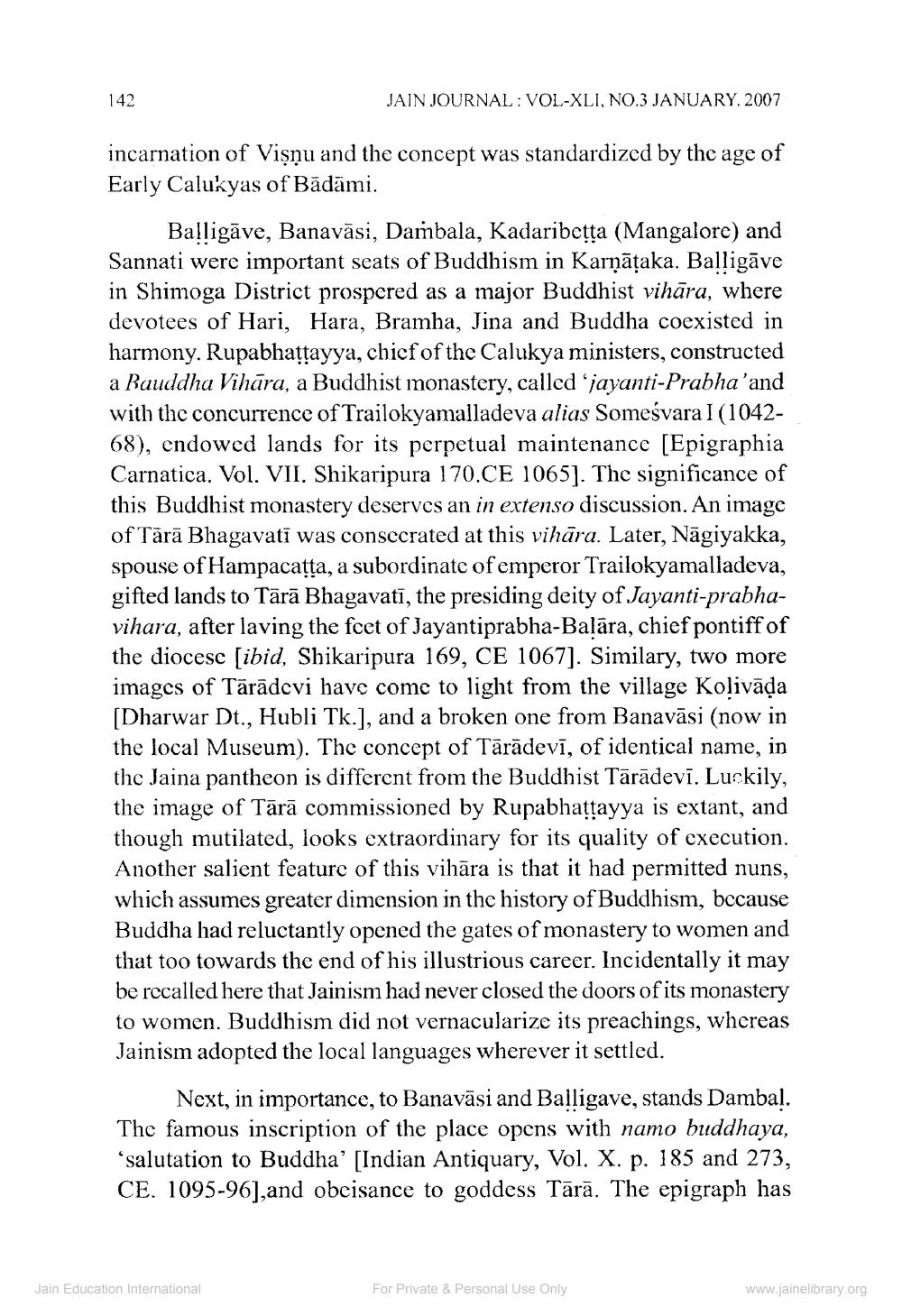________________
142
JAIN JOURNAL: VOL-XLI, NO.3 JANUARY. 2007
incarnation of Visņu and the concept was standardized by the age of Early Calukyas of Bādāmi.
Balligave, Banavāsi, Dambala, Kadaribeṭṭa (Mangalore) and Sannati were important seats of Buddhism in Karṇāṭaka. Balligave in Shimoga District prospered as a major Buddhist vihāra, where devotees of Hari, Hara, Bramha, Jina and Buddha coexisted in harmony. Rupabhaṭṭayya, chief of the Calukya ministers, constructed a Bauddha Vihara, a Buddhist monastery, called 'jayanti-Prabha'and with the concurrence of Trailokyamalladeva alias Someśvara I (104268), endowed lands for its perpetual maintenance [Epigraphia Carnatica. Vol. VII. Shikaripura 170.CE 1065]. The significance of this Buddhist monastery deserves an in extenso discussion. An image of Tara Bhagavati was consecrated at this vihara. Later, Nāgiyakka, spouse of Hampacaṭṭa, a subordinate of emperor Trailokyamalladeva, gifted lands to Tārā Bhagavatī, the presiding deity of Jayanti-prabhavihara, after laving the feet of Jayantiprabha-Balāra, chief pontiff of the diocese [ibid, Shikaripura 169, CE 1067]. Similary, two more images of Taradevi have come to light from the village Kolivaḍa [Dharwar Dt., Hubli Tk.], and a broken one from Banavasi (now in the local Museum). The concept of Tarādevī, of identical name, in the Jaina pantheon is different from the Buddhist Tarādevī. Luckily, the image of Tārā commissioned by Rupabhaṭṭayya is extant, and though mutilated, looks extraordinary for its quality of execution. Another salient feature of this vihara is that it had permitted nuns, which assumes greater dimension in the history of Buddhism, because Buddha had reluctantly opened the gates of monastery to women and that too towards the end of his illustrious career. Incidentally it may be recalled here that Jainism had never closed the doors of its monastery to women. Buddhism did not vernacularize its preachings, whereas Jainism adopted the local languages wherever it settled.
Next, in importance, to Banavāsi and Balligave, stands Dambal. The famous inscription of the place opens with namo buddhaya, 'salutation to Buddha' [Indian Antiquary, Vol. X. p. 185 and 273, CE. 1095-96], and obeisance to goddess Tārā. The epigraph has
Jain Education International
For Private & Personal Use Only
www.jainelibrary.org




